It’s incredible how many stadiums and arenas were built around New York during that “first generation” of 1964-1984—and how quickly they were demolished.
Yankee Stadium II, Shea Stadium, Giants Stadium, the Brendan Byrne Arena, the Nassau Coliseum—nearly all gone and forgotten now, despite the roughly $384 million dollars in public money (over $2.1 billion in today’s money), expended on them.
(All have been demolished, save for the Nassau Coliseum, the home of minor-league basketball, and the Byrne Arena, now the Izod Center, home of television rehearsal stages. But we’re still paying them off!)
But it didn't end there. We kept going, of course—on to the second generation of publicly subsidized sports stadiums. Wealthfare for all!
Charlie Dolan never did get a (wholly new) Madison Square Garden. But George Steinbrenner got a third Yankee Stadium, the Mets got Citi Field, the Nets got Barclays Center, the Islanders, the UBS Arena.
It didn’t matter how many other needs there might be in places where these teams played. The city of Newark even paid out nearly $275 million to build the Prudential Center and bring in the Devils. Just what Newark needed—a hockey team!
Despite this immense “second round” of subsidies—now well into the billions—public authorities neither requested nor received any concessions over how local teams would run their businesses. Prices went up—and up—and ballparks started shrinking.
In 2008, the New York Yankees and the Mets drew a combined 8,340,700 fans—over 2.7 more than all three New York baseball teams had drawn at the height of their popularity, in the “Golden Age” year of 1947.
Barring some completely unforeseen change in, well, everything, their attendance will never reach approach these heights again.
Both the Mets and the Yankees made a deliberate decision to sacrifice affordable seats available to the general public, for more luxury boxes and other restricted, elite sections. Today, Yankee Stadium’s capacity has been reduced to just 46,537 for baseball, from its all-time high of 82,000 in 1927.
In other words, almost an entire Fenway Park’s equivalent of fans had been shut out of New York’s most popular ballpark.
What’s more, at all local, major-league sports facilities in the New York area, legal tender…is no longer legal tender. In a policy of dubious legality, the nine New York teams all insist on “cashless” transactions, which they depict as some sort of consumer-friendly service, instead of the exploitive effort to harvest fans’ data that it is.
For that matter, New York and New Jersey have made absolutely no effort to keep prices down on your screens away from the ballpark. Nor have our public officials ever challenged, in any way, pro sports’ new, noncompetitive arrangements, which have systematically erased the city’s market advantages.
While New York fans are charged prices higher than almost anywhere else on the continent, much of the money they provide is siphoned off to other cities and other teams, to ensure “competitive balance.”
Revenue sharing, luxury taxes, and salary caps leveled the playing field in all the big leagues—while individual teams were still allowed to move to new cities if they got a better offer. That is, teams were allowed to freely compete with each other…only in extorting cities for enormous payouts.
With pro sports cartels sharing and sharing alike, it is possible for teams to skip back and forth around the country, bidding up the publicly subsidies for their luxury-first stadiums. (Looking at you, Oakland-Los Angeles-Oakland-Las Vegas Raiders.
And yet because no league has built in spending “floors” to accompany its spending “ceilings,” owners are allowed the option of not really competing at all, but simply pocketing handouts from taxpayers in other cities—whether those taxpayers ever wish to see a game or not.
Over the last few decades, New York and many other big-city markets have allowed all their sports leverage to be wiped away—in exchange for nothing, and long after their economic vitality and wealth had been fully restored, making them more desirable than ever.
Even the expansion of local teams here in New York by over 100 percent from 1960 to-2007—from 4 to 9—has led to no decrease in prices, and no increased competition between teams.
Where once the city had marvelous, cutthroat rivalries between its ballclubs, now New York is a peaceable kingdom, with no owners or players much bestirred to beat even the other team(s) in town—much less win a championship.












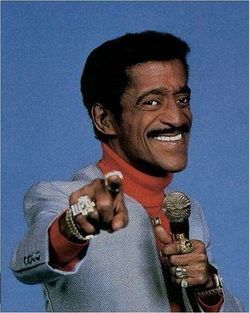
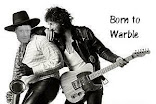


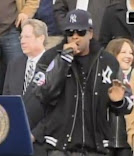


















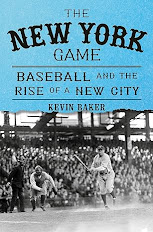









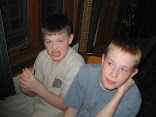

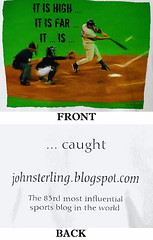



9 comments:
Ahhhhh, good old Shea Stadium. The only ballpark that I was ever lucky enough to catch a foul ball.
Back in the early 90's you could buy a cheap ticket and slip "Tiny the Usher" a $20 bill and he'd move you down right behind home plate. This was done with the understanding that he might have to move you somewhere else if the actual ticket holder/s showed up (which they often did - mostly Wall Street workers out to pickle themselves on beer).
Sid Fernandez was pitching. San Francisco's Matt Williams was at the plate. Williams scorched one high and straight back. It ricocheted against the brightly painted blue upper deck concrete, and landed like a feather into the palms of my hands. There was a scrape of blue right across the sweet spot.
I held on to that ball for a while, then gifted it to my nephew who played with it and at some point lost or misplaced it.
I never did get a foul ball, or any ball, at a baseball game. If it wasn't so fucking expensive to go to one, I might have had more chances.
Screw wealthfare. Power to the people, right on!
Steph Curry is god
Of course, the old canard used by city officials on the take is still the same con used today: Subsidizing stadiums with taxpayer dollars is great because the money spent helping pay for the team owner's cost will come back to city coffers exponentially through jobs created at the stadium and surrounding new entertainment spots. But this never happens because most of the jobs created are low-paying and seasonal. The cost absorbed by the municipality for police security, maintenance, and clean-up wipes away the revenue generated. Add to this the long-term tax reduction or total abatement and the city loses a ton of money.
On top of that, the greedy team management claims the new ballpark will increase city pride. That pride is always one-way. In 2009 that condescending prick, Lonn Trost, said that the intention of building that concrete moat separating the first 12 rows of $1500-$3000 seats from the rest of the wealthy wannabees and batting practice watchers only made sense because "if you sat in a suite, would you want others crashing the place?" In other words, keep "Joe six-pack". away. Then, in 20016 the contemptuous cock sucker had this to say about ticket-buyers reselling on the secondary market such as StubHub: “The problem below market at a certain point is that if you buy a ticket in a very premium location and pay a substantial amount of money. It’s not that we don’t want that fan to sell it, but that fan is sitting there having paid a substantial amount of money for a ticket and [another] fan picks it up for a buck-and-a-half and sits there, and it’s frustrating to the purchaser of the full amount…And quite frankly, the fan may be someone who has never sat in a premium location. So that’s a frustration to our existing fan base.” I guess it should be renamed SnobHub.
In other words, the average Joe, or in Trost's elitist mind, the riff-raff can't be counted on to party properly with the rich. But that wasn't his real reason for trying to prohibit ticket resales. No- he couldn't care less about even the well-to-do once they've paid for their grossly overpriced ticket. It was about being cut out completely from any revenue derived from the secondary market.
Of course they don't want riff-raff in the 'spensive seats! They'd rather have tv show them empty.
Fucking idiots!
Game thread please or I'll have to do a crappy one.
Rufus...that's why in the first few years (Remember, the new stadium opened right after the financial crash started in the autumn of 2008) the Yankees had to "donate" thousands of the lower box seats north of that concrete moat to make it appear those seats were still highly desirable and not completely empty. They usually gave them to US military members and community kid's organizations. I remember that Howard Stern got a hold of a set of those tickets right behind home plate during a Saturday Fox national broadcast and gave them to Baba Booey, Crachead Bob, Beetlejuice, Wendy the Retard, Bigfoot, and another few "Whack-Packers". After an inning or two of them being visible on every pitch, bobbing up and down, yelling and twitching, Fox tried to completely block them out with the TV ball/strike/out/hits/ runs, and errors box score. But it didn't work.
Couldn't put it better myself, Carl Weitz! It's the biggest rip-off going. City and state authorities should limit themselves to ensuring fast, safe transportation to and from the ballpark. That's it! If teams won't go along, then they should break the sports cartels.
It's easily within their power. But they won't do it—and we the voters won't force them to do it? Why??!
Amen, Hoss! The only losers are the fans here in NYC. We're paying for other teams to beat our teams. And uber rich guys like HAL go along with it, because of financial goals like risk management. It's truly disgusting.
Post a Comment